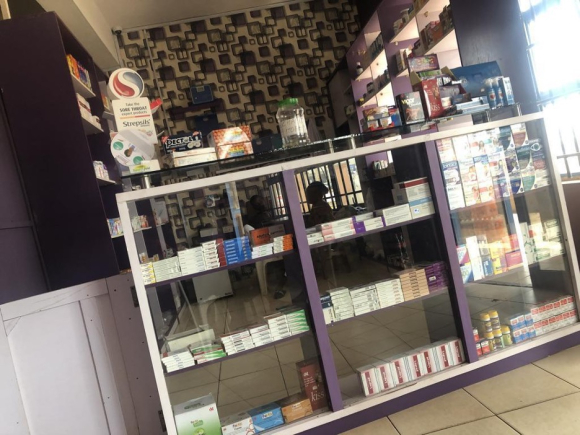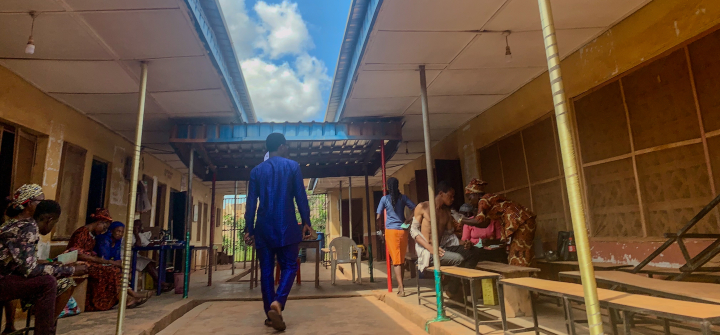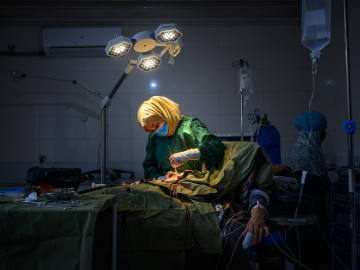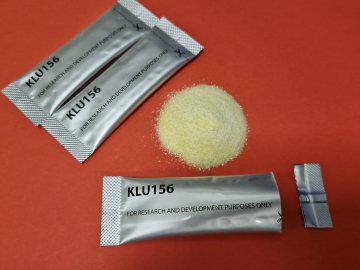Mosquito Nets and Geopolitical Bets
IBADAN, Nigeria—At the Alegongo Primary Health Centre clinic, abuzz with activity, a nurse greets Ibidun Arike warmly before administering a rapid malaria test to her feverish son, Olu, chatting softly with him to ease his anxiety. Within minutes, the test confirms malaria, and the nurse dispenses free antimalarial medication along with instructions to finish the entire dose.
“It’s malaria again,” Arike sighs softly. As a trader who sells groceries to support her family, she is relieved and grateful for Alegongo’s free malaria services. Along with the insecticide-treated nets (ITNs) her family sleeps under nightly, these services ensure that malaria remains manageable for her family—for now.
Amid broader uncertainties surrounding the withdrawal of U.S. funding for anti-malaria programs in Africa, Arike’s sense of security could soon unravel.
Nigeria bears the world’s highest malaria burden, accounting for 26% of global cases (over 260 million total) and over 30% of malaria-related deaths (nearly 600,000 total) in 2023, according to the 2024 World Malaria Report. Nigeria contributed nearly 40% of global malaria deaths among children under 5. However, as part of the High Burden to High Impact (HBHI) initiative, Nigeria has seen a 13% reduction in mortality rates since 2017.
Initiatives such as those by the Johns Hopkins Center for Communication Programs (CCP), which were USAID-funded until March 2025, helped make that possible. Prevalence fell from 42% in 2010 to 22% in 2021 nationwide in 2021 nationwide and Lagos now records the country’s lowest rates, while a steady flow of donor‑funded supplies meant that Nigerians like Arike could walk into primary‑health centers and receive free rapid tests and artemisinin‑based combination therapy (ACT) malaria medications .
The U.S. government has been bankrolling a finely tuned supply chain that could deliver 5 million long‑lasting insecticide‑treated nets into Oyo State in a single campaign in mid-2025 and shuttle surplus medicines between states before any clinic shelf went bare. A permanent funding halt would freeze that machinery: Nets could languish at ports. New health workers would miss critical training. The five‑to‑six‑month supply of antimalarials could run dry. And the surveys that anchor accountability by tracking ITN ownership, diagnostics, prevalence, etc. would vanish. It's an obliteration of both the gains and the very ability to see them.
Alegongo has already run out of ITNs, a crucial preventive measure. But for now, the clinic still has enough reserves of tests and antimalarials.
However, behind the scenes, uncertainty looms. Without new funding, nationwide shortages of ACTs, rapid diagnostic test kits, and injectable artesunate (used for severe malaria) will likely begin by the end of this summer.
Mass layoffs
Ade’s* last day of work was March 31. They had spent seven years and two weeks committed to malaria control efforts with CCP in Abuja. Then it was over.
“It wasn’t exactly a surprise,” Ade says. “But you’re never fully prepared for the reality when it hits.”
The stop-work order had arrived in late January, part of the U.S. government’s sudden cessation of funding for malaria initiatives, particularly affecting projects backed by the President’s Malaria Initiative (PMI).
“Everyone was let go,” Ade explains, their voice steady, but tinged with frustration. “We thought there might be a new project, something to transition into. But now, there’s nothing.”
CCP and others had trained health workers, supervised the distribution of vital malaria medications, and ensured local health centers maintained best practices in malaria case management. While frontline clinics currently remain stocked, Ade warned that unseen vulnerabilities lie beneath the surface.

A pharmacy counter at Odua Shopping Complex, IdiApe in Ibadan, Nigeria. Dec 8, 2024. Image by Paul Adepoju.
“These stocks won’t last forever,” they note. “What people don’t see now are the logistical strings being cut. Chemonics [the international development firm responsible for procuring and distributing medications and rapid test kits] relies heavily on future funding cycles. Those supply chains, once broken, don’t repair easily.”
The abrupt loss of supportive oversight means newly recruited or transferred health workers may soon lack the training required to accurately diagnose malaria. (It’s an important skill: Fevers are frequently misdiagnosed as malaria.) Without training for providers, Ade expects more diagnostic mistakes, draining precious drug supplies, obscuring health data, and risking progress against the disease.
Perhaps most alarming is the disruption of mass distribution campaigns for ITNs. These distributions, crucial to prevention, involve complex logistics and substantial financial backing. “Even if nets arrived at Nigerian ports tomorrow, there might not be any funds to distribute them,” Ade explains.
For Ade, the real impact isn’t just in the lost job, but in the lost momentum toward eliminating malaria, a disease that disproportionately affects Nigeria. “When the partners leave, accountability diminishes,” they say. “Without measurement, without external pressure, it’s the ordinary Nigerian—the pregnant mother, the young child—who ultimately pays the price.”
Cautious Optimism
“We never learn—or if we do, we forget immediately,” Oyewale Tomori, PhD, a professor at Redeemer's University in Ede, Nigeria, says candidly.
Tomori sees the latest U.S. funding withdrawal as a wake-up call and believes the malaria funding disruptions expose systemic flaws and chronic underinvestment in basic, preventative health infrastructure. “We are not resource-limited; we are resource-wasteful,” he sharply insists, highlighting, as an example, lengthy motorcades for state governors while some local health officers lack even bicycles to reach rural villages, or the fact that some governments, including Nigeria’s, managed to find internal funds to cover needs after the U.S. retreat.
Still, Tomori sees the crisis as a critical—perhaps final—opportunity for Africa to confront uncomfortable truths about its health systems and make a strategic shift. “We have built giant bureaucracies like the NCDC in Abuja, trying to control diseases remotely, while neglecting local preventive capacities,” he says. Genuine prevention, he explains, would require empowering local epidemiological teams, ensuring community-level surveillance, and producing resources like bed nets locally—creating jobs and reducing costs at the same time.
“If this funding withdrawal forces us to prioritize properly, then it might be exactly what we need,” he says. “We have the capacity; we have the experience. It’s time we started using it.
*Ade’s name has been changed to protect their identity.
Ed. Note: This article was produced in collaboration with Hopkins Bloomberg Public Health magazine and is part of a series that examines front-line impacts of cuts in U.S. funding.
Join the 50,000+ subscribers in 170+ countries who rely on Global Health NOW summaries and exclusive articles for the latest public health news. Sign up for our free weekday newsletter, and please share the link with friends and colleagues.
The primary health center is a beehive of activities but malaria takes the lead in terms of cases. Ibadan, Nigeria, March 8. Image by Paul Adepoju.





